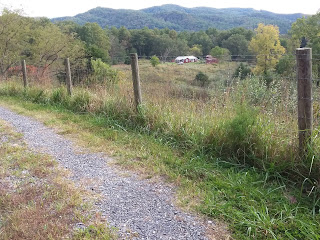Pawpaws
I am often surprised when my gardening and hiking friends have never heard of the pawpaw, Asimina triloba. The pawpaw is North America's largest native fruit! It generally grows by rivers, but is also being hybridized and marketed as various varieties (e.g Shenandoah, Susquehanah). There are a few reasons my friends might not have not heard of this fruit. First, my friends might live outside its range:

Second, they might not hike in the correct ecosystems (rivers). Third, the pawpaw is very fragile and is not suitable for commercial production (yet), though breeding programs might take care of this in the future... but you still can't buy it in a grocery store.
There are a few other strikes against the pawpaw. It has quite a few large seeds (see photo below). It sends up suckers readily (vegetative reproduction). The wild pawpaw produces a little fruit, because its flowers are poor at getting fertilized. It is also not self-fertile. Wild fruit can vary in flavor, with the best fruit tasting a bit like banana, mango, and maybe a tad bit of pineapple. [Side note: Spanish colonizers mistook the pawpaw for papaya,and the name evolved to pawpaw]. This is where breeders have stepped up, creating hybrids with: larger, more consistent fruit; smaller and fewer seeds; better fertilization and; greater hardiness away from river environments and in more northerly climates.
I grow wild pawpaw trees that I started from the wild seed of a tasty fruit. Because my trees are from the same individual (remember they are not self-fertile), I have started hand pollinating them in spring from a few wild pawpaw flowers from another individual [sorry for all these digressions, but it can be hard to determine if you are collecting from different individuals unless they are quite a bit away from each other. Due to reproduction by suckering, a single genetic pawpaw can appear as a string of trees a quarter of a mile or more along a riverbank].
Let me share exactly why I have been really lucky in hand pollinating, and introduce a new botanical term, trioecious. You know that plant reproduction can be complicated, right? Bear with me. Plants can have flowers of only one sex, male or female (monecious). This means a single individual can be male, or female, but not both. Plants can have flowers of both sexes on one plant, male flowers AND female flowers (dioecious). A plant can have individual flowers that have the parts of both sexes (hermaphroditic), having what are called "perfect flowers." Generally, each species is ONE way... But pawpaws are trioecious, a tree can be either all male, or all female, or a mix of both. I guess I am lucky that I started seed that resulted in all female trees or a mixture AND that I picked enough flowers that were pollen bearing (male) for pollinating. [Note: I pick very few flowers]. You know I am going to pay close attention to this next season!
Small "wild" fruit with seed exposedBut, I am still glad I took the gamble and started growing them. Pawpaws are the only host plant for the zebra swallowtail butterfly...and that's worth it right there.
So, grow two varieties of hybrid pawpaws, central Virginians! They need adequate water when young. If they are in full sun, they will need a shade cloth for the first few years, or you can grow them in part shade. Edible Landscaping in Afton, VA has them at: https://ediblelandscaping.com/products/trees/Pawpaws/












